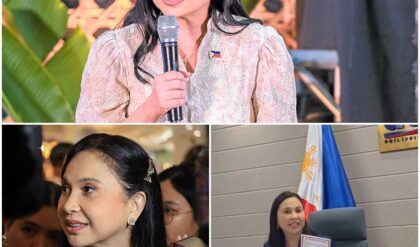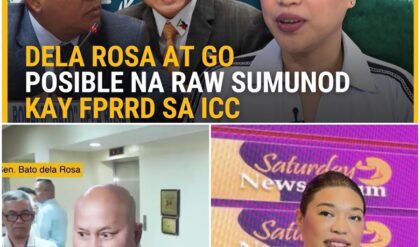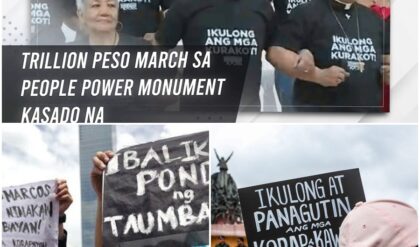“The World Is Stunned: The Shocking Truth About GuyCoy – Only Believe What You Truly Hear and See”
In the glittering, chaotic world of fandoms, few phenomena capture the collective attention of the globe like GuyCoy. Known for his charisma, talent, and the enigma that surrounds him, GuyCoy has long been a figure of admiration, speculation, and sometimes controversy. Yet recent revelations have sent shockwaves far beyond his usual fan base. Headlines declare: “The World Is Stunned! The Truth About GuyCoy Has Finally Been Revealed – Only Believe What You Truly Hear and See.” Fans, journalists, and casual observers alike have been left grappling with what is real, what is rumor, and what lurks beneath the surface of this carefully constructed persona.

I. The Catalyst: A Single Question
It all started with what seemed like a harmless question during an intimate fan interaction. At a small meet-and-greet in Manila, a young fan dared to ask GuyCoy about a persistent rumor that had circulated for years. The question, innocuous on the surface, elicited a reaction that would ripple across the global fan community.
“I remember seeing him freeze for a moment,” one attendee recounted. “It was as if he was weighing whether to answer or shut it down entirely. The tension in the room was palpable. You could hear a pin drop.”
The answer he eventually gave was cryptic but definitive, challenging assumptions and debunking falsehoods that had circulated online. For fans who had followed every post, comment, and video, the moment felt almost cinematic—a revelation of something they had only whispered about behind screens.
II. Social Media Eruption
Almost immediately after the event, videos and transcripts circulated across social media platforms. Within hours, hashtags like #GuyCoyTruth and #OnlyBelieveWhatYouHear were trending worldwide. Thousands of fans shared screenshots, clips, and live commentaries. Some expressed relief, others confusion, and yet others outright disbelief.
Experts in digital culture pointed out the power of such moments: “Fandoms operate on a combination of myth-making and evidence-based observation,” explained Dr. Lin Wei, a media analyst. “When a celebrity of GuyCoy’s stature responds directly to persistent rumors, it becomes a seismic event for the community. Suddenly, every post, tweet, and comment is scrutinized for hidden meaning.”
The global nature of social media amplified the event. Fans from Europe, North America, and Southeast Asia all engaged in real-time discussion, dissecting every word, gesture, and facial expression. What started as a small, intimate interaction became a worldwide spectacle, highlighting both the influence of GuyCoy and the collective hunger for truth in fan culture.
III. The Cryptic Statement
What GuyCoy said during that pivotal moment is now etched into fan lore. His statement, brief yet loaded with implication, encouraged everyone to trust only their own perception and experience:
“Believe only what you see and hear with your own senses. Everything else is speculation, manipulation, or deliberate distraction.”
These words, though simple, carried enormous weight. For years, fans had been fed conflicting information, from supposed insider leaks to viral rumors. Suddenly, the responsibility shifted back to the audience: to question, to observe, and to discern truth from fiction.
This moment marked a turning point in the perception of GuyCoy. No longer was he just a performer, a celebrity to idolize from afar. He had become a symbol of transparency, urging his audience to navigate an often-manipulative digital and media landscape.
IV. The Fan Community Responds
The response from GuyCoy’s fan community was intense. Online forums and fan groups erupted in debate. Some fans interpreted his statement as a call to arms against misinformation, while others were concerned it might signal hidden controversies that he could not openly discuss.
One prominent fan blogger wrote: “GuyCoy isn’t just telling us to be careful about gossip. He’s highlighting the fragility of our media ecosystem, the ease with which facts can be manipulated, and the importance of personal verification.”
Groups formed to cross-check claims, compile official statements, and archive videos of GuyCoy’s public appearances. Some fans even created interactive timelines, mapping every public statement and media appearance, searching for consistencies and inconsistencies. The meticulousness of the community highlighted the blurred lines between fandom, journalism, and investigative research in the digital age.
V. The Rumors and Speculation
For years, countless rumors had swirled around GuyCoy. Some alleged financial scandals, others personal betrayals, and some bizarre, almost fantastical conspiracy theories. The digital age had enabled these rumors to spread like wildfire, often without any basis in fact.
When GuyCoy’s statement surfaced, it acted as both confirmation and denial—confirming the need to question everything, denying the validity of any speculation not directly substantiated by evidence. Analysts in entertainment law noted that the statement was an intelligent safeguard: it allowed him to distance himself from misinformation without directly confronting each false claim, a strategic move that maintained both credibility and privacy.
VI. Psychological Impact on Fans
The revelation had profound psychological effects on fans. Many expressed relief at having clarity, yet the ambiguous nature of the message also generated anxiety. How could they distinguish truth from falsehood in a world filled with fabricated stories, doctored images, and manipulated narratives?
“GuyCoy’s message resonated because it made us realize our own responsibility as consumers of media,” said Jessica Lau, a psychologist specializing in fan behavior. “It challenged passive consumption and emphasized active discernment, which can be both empowering and disorienting.”
VII. Behind the Curtain: The Media Industry
Media executives and entertainment journalists also reacted strongly. Rumors of contractual disputes, studio conflicts, and strategic PR campaigns were suddenly reframed under a new lens: if even fans were urged to question everything, the media itself would be held accountable for accuracy and ethics.
Several major entertainment networks issued statements reminding audiences to respect privacy, while simultaneously acknowledging that the culture of speculation had become a problem. Insider sources suggested that some studios were nervous: if fans scrutinized every statement and action, the usual leeway for rumor and spin would disappear.
VIII. The Lesson in Discernment
Beyond entertainment and scandal, the incident with GuyCoy represents a broader lesson for global audiences: truth is not always convenient, viral, or simplified. In an age dominated by information overload, viral content, and social media algorithms, the simple act of hearing something directly from the source—and experiencing it oneself—can be revolutionary.
This concept resonates beyond celebrity culture. It reminds the public of the importance of critical thinking, verification, and skepticism. GuyCoy, intentionally or not, became a symbol of media literacy: a figure urging his followers to actively participate in truth-finding rather than passively consuming narratives.
IX. International Implications
The message spread quickly beyond the Philippines. International media covered the event, noting how a single celebrity statement could ripple across continents, influencing fan behavior, journalistic standards, and online discourse. Cultural analysts remarked on the uniqueness of the phenomenon: few celebrities have simultaneously maintained mystique while directly instructing global audiences on discernment.
This elevated GuyCoy’s status from mere entertainer to global thought-leader in a subtle yet profound way. His influence now extended beyond music, television, or social media presence; it encompassed ethics, perception, and critical engagement.
X. Fan-Led Investigations
Inspired by GuyCoy’s message, fans began conducting their own investigations. They tracked interviews, analyzed social media activity, and compared statements to uncover inconsistencies or confirmations. This fan-driven research community became a sort of informal watchdog network, blending passion with methodical scrutiny.
While some critics dismissed this activity as obsessive or invasive, proponents argued it was a testament to the responsibility GuyCoy had instilled. Fans were no longer passive admirers—they had become participants in the pursuit of truth.
XI. The Human Side of GuyCoy
Amid the shock and analysis, it’s important to remember the human element. GuyCoy’s deliberate call for discernment reflects a deep awareness of the pressures of fame and the potential for distortion in public perception. By urging fans to trust only what they directly see and hear, he both preserves his privacy and empowers his audience—a rare combination in celebrity culture.
Psychologists note that this balance is psychologically complex. Celebrities often struggle with the dichotomy of public adoration and private life. GuyCoy’s approach—addressing rumors indirectly while fostering critical engagement—may serve as a model for future stars navigating similar challenges.
XII. The Legacy of the Revelation
In the aftermath, GuyCoy’s legacy evolved. Beyond his performances, social media presence, or public appearances, he became a figure of discourse about truth, media ethics, and fan responsibility. Schools of communication and media ethics even referenced the incident in case studies, exploring the intersection of celebrity influence, misinformation, and public perception.
Fans continue to debate, analyze, and reflect. Social media timelines are filled with discussions dissecting past rumors, interviews, and appearances. The event has created a permanent shift in how fandoms interact with their idols, blending admiration with critical thought.
XIII. Reflection and Conclusion
The revelation surrounding GuyCoy is a stark reminder of the power and responsibility inherent in both celebrity and fandom. In a world dominated by narratives, viral content, and misinformation, the ability to discern truth is more crucial than ever. GuyCoy’s simple yet profound instruction—to trust only what you truly hear and see—challenges the public to engage thoughtfully, question assumptions, and recognize the complexity of human behavior.
Ultimately, the story of GuyCoy illustrates that fame, while often dazzling, is layered with challenges. It also demonstrates the capacity of a single individual to influence global discourse, not through spectacle alone, but through wisdom, discretion, and the careful guidance of his audience toward truth.
For the fans of GuyCoy, the experience has been transformative. They have witnessed the intersection of admiration, media literacy, and personal responsibility. The message is clear: in a world filled with noise, only firsthand experience and verified truth can guide us. GuyCoy’s influence endures, not just as a star, but as a teacher in the art of discernment.
The world remains stunned, but also enlightened. The lesson is timeless: believe only what you truly see and hear—and in that lies the ultimate power of clarity in a clouded, chaotic world.





